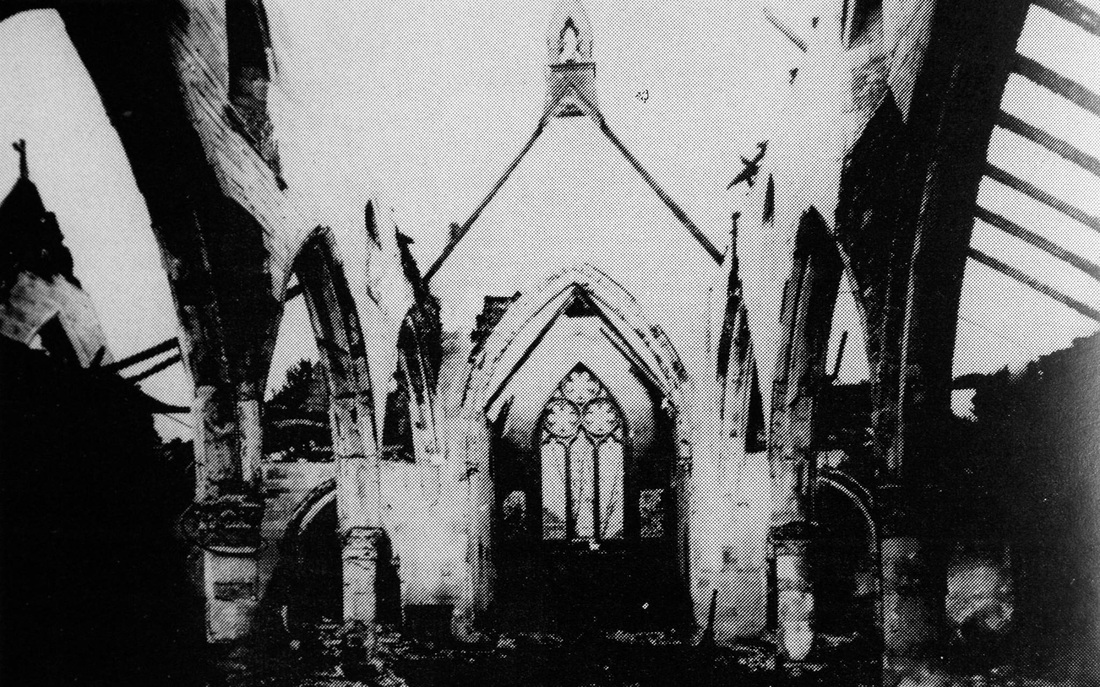When Charles I and his Parliament went to war in 1642, Hereford was a strategic gateway to Wales and the Marches, and a firm Royalist stronghold.
The Parliamentarian Earl of Leven and his Scots army arrived just a few days after the King had left Hereford late in July 1645, but their progress had been slow: the Earl complained that it had taken a whole day to cover only eight miles on Herefordshire's poor roads.
The city defences had been strengthened since earlier, brief occupations by the Roundheads, and a large earthwork had been constructed along the Bartonsham meadow, roughly following the line of Park Street and Scots Close. The defenders fired or flooded the mines dug by Parliamentary forces under St Owen's Gate, and St Owen's Church, a valuable piece of cover for the besiegers, was destroyed. Hereford lost 21 men, their attackers 1,200.
The Scots left in September as the King advanced from Worcester. He stayed in Hereford for a few days and added to Hereford's existing coat of arms nine St Andrew's crosses to signify the nine regiments of defeated Scots. Scots Close was named in commemoration.
Towards the end of the Civil War, the Parliamentarian Col. John Birch decided to take the city once and for all, and to finally show the native's who was boss. He hid his troops near Byster's Gate and took Hereford early the next morning, in half an hour and with the loss of 10 lives.
Parliament appointed Col. Birch as Governor of Hereford. He commented that the city was 'almost as difficult to keepe as to take', so it seems the citizens must still have remembered the motto the King had given them when he stayed there in 1645: Invictae fidelitatis praemium meaning 'The reward of invincible loyalty'.
The Parliamentarian Earl of Leven and his Scots army arrived just a few days after the King had left Hereford late in July 1645, but their progress had been slow: the Earl complained that it had taken a whole day to cover only eight miles on Herefordshire's poor roads.
The city defences had been strengthened since earlier, brief occupations by the Roundheads, and a large earthwork had been constructed along the Bartonsham meadow, roughly following the line of Park Street and Scots Close. The defenders fired or flooded the mines dug by Parliamentary forces under St Owen's Gate, and St Owen's Church, a valuable piece of cover for the besiegers, was destroyed. Hereford lost 21 men, their attackers 1,200.
The Scots left in September as the King advanced from Worcester. He stayed in Hereford for a few days and added to Hereford's existing coat of arms nine St Andrew's crosses to signify the nine regiments of defeated Scots. Scots Close was named in commemoration.
Towards the end of the Civil War, the Parliamentarian Col. John Birch decided to take the city once and for all, and to finally show the native's who was boss. He hid his troops near Byster's Gate and took Hereford early the next morning, in half an hour and with the loss of 10 lives.
Parliament appointed Col. Birch as Governor of Hereford. He commented that the city was 'almost as difficult to keepe as to take', so it seems the citizens must still have remembered the motto the King had given them when he stayed there in 1645: Invictae fidelitatis praemium meaning 'The reward of invincible loyalty'.

